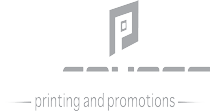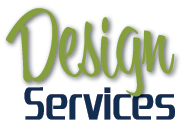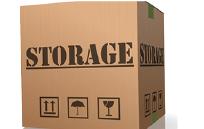Understanding Test Requisition Form / Barcode Lab forms FAQ
“Explore Common Questions About Medical Lab Test Requisition Forms – FAQs”
What is a test requisition form?
A test requisition form is used by healthcare professionals to request laboratory tests such as urine or blood testing. Test requisition forms are often called lab forms. When blood, urine, or tissue is sent to a lab from a doctor’s office a test requisition form is required. The patient demographics, ordering physician, insurance information and what test should be performed will be on this form.
Test requisition forms normally include barcode labels along with readable numbers. The barcode labels are used to identify corresponding containers with sample to be tested.
Are there different types of test requisition forms (lab forms)
There are several different types and variations of test requisition forms (lab forms): There are digital laser printed single or multipart NCR forms, hand written multi-part NCR forms, and computer printed multi-part pin-fed NCR forms.
Contact us for detailed information on various types of test requisition forms – we’d be happy to help.
What is a lab requisition form?
A lab requisition form is used by healthcare professionals to request laboratory tests such as urine or blood testing. They are also called test requisition forms. When blood, urine, or tissue is sent to a lab from a doctor’s office a lab requisition form is required. The patient demographics, ordering physician, insurance information and what test should be performed will be on this form.
Lab forms normally include barcode labels along with readable numbers. The barcode labels are used to identify corresponding containers with sample to be tested.
How does a lab form barcode label work?
A barcode label works as follows:
- A scanner on a computer shines LED or laser light on to barcode.
- Light reflects back off the barcode into a light-detecting component in the computer allowing the computer to read the information.
- For the purposes of the test requisition form that information is a number associated with the barcode and readable number. This is so lab will know who the samples belong to and where to send the results.
- Without this barcode, there wouldn’t be a way to keep the samples and test forms together. So, for example if a patient John Smith had blood draw for drug testing for a job and so did Maria Smith the lab will have a way of tracking each specimen so that Johns’ results get to his future employer.
Are there different types of barcode labels on test requisitions forms?
There are two types of test requisition forms: piggy back labels; and integrated bar code labels. If your requisition form is going to be printed on a laser printer or handwritten the best way is integrated barcode labels. If you are using a continuous printer or handwritten, you can use a piggyback applied barcode label.
What is a lab form with integrated barcode label?
Integrated barcode labels take on many variations, however, a basic definition would be the application of a label liner material to the back of a sheet. The face is then die cut to allow for the removal of a label. The liner can have a NCR coating to allow you the ability to write on the label and go through to second sheet.
Custom label sizes are available on lab forms. There are many standard size labels to choose from to avoid extra die charges.
What is a piggyback applied barcode label?
A piggyback barcode label is constructed of two labels, one label sits on top of the other label but slightly smaller (this is where the word piggybacks comes from). These labels have five layers: a face material, an adhesive layer, a release liner, another adhesive layer, and a backing sheet.
Piggyback barcode labels work well with continuous printed or handwritten test requisition forms. However, they do not work at all with digital printed (laser printed) forms. The heat from the laser printer melts the adhesive and will jam up your machine.
How many barcode labels can be placed on a test requisition form?
The number of barcode labels included on a test requisition form depends on what is determined by what tests will be run per form. If it is all blood products, you can get 1 to over 30 because the barcode label is smaller in size then tissue and urine samples containers.
You should consult with a professional printing company that specializes in barcode label test requisition forms.
Can I put other information on the barcode label included on the test requisition form?
Addition information can be added to barcode labels on test requisition forms. Most often the patient’s name and date of birth are included. This information is a second verification for the lab doing the testing.
Test requisition forms (lab forms) are available in black and white or as many color inks as you need. Each form is designed specific your lab needs. We can provide single page, multi page as a laser feed form, continuous form, hand written form.
For more information on test requisition forms, lab forms, integrated bar code or piggyback barcode label forms please contact Unisource Printing Services and Promotions.
We Design Custom Test Requisition Forms
(commonly referred to as Lab Forms)
Barcode Label and Test Requisitions forms storage can be provided.
“As a newer laboratory, it’s been very challenging find reliable vendors to meet our various needs. I find that it often takes an enormous amount of hands-on effort to get things done to our standards. Unisource has been the single best vendor we’ve worked with, bar none. It’s a huge relief knowing that Carol is anticipating our needs before they even occur to us. Unisource was able to mockup, proof, ship a prototype, then print and ship a large order of forms in the same amount of time it took a competing vendor to return a phone call, and at significantly better cost. I literally cannot imagine another printer that could do this job more effectively than Unisource.”




